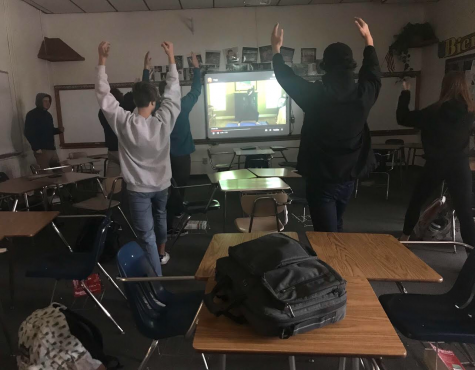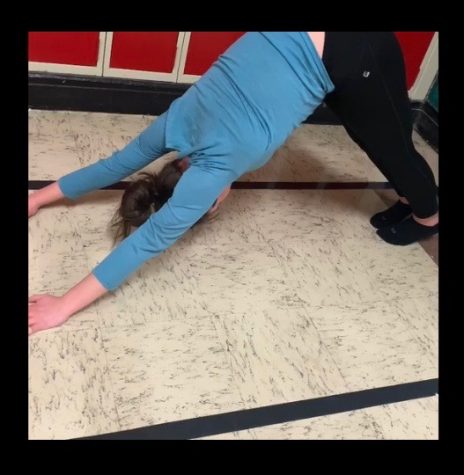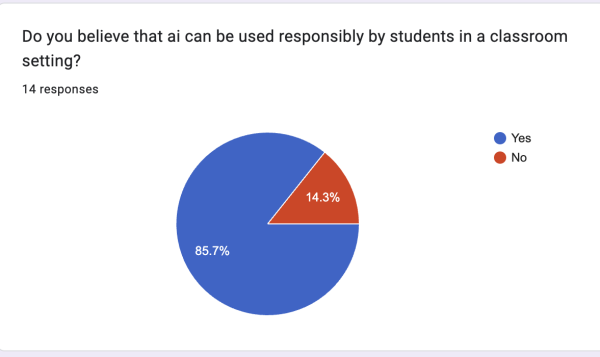Yoga’s Influence Stretches to the Classroom
For various reasons, a growing number of teachers have begun experimenting with practicing yoga in the classroom, and a growing number of students have begun to find themselves doing sun salutations or breathing exercises during class. Of 86 students who responded to an Instagram poll, 43% said they had done yoga in a classroom.
Yoga has become very popular in the United States. Studies have shown that yoga can improve mindfulness and attentiveness in teens. However, spanish teacher Milton Zhinin-Barreto questions the authenticity of these studies. “Studies showing benefits, they are not controlled, they have small numbers of participants, and they are all within the past 5 years. From 2014 to 2020 is such a short amount of time to say, oh this works,” he said.
Zhinin-Barreto began doing yoga with his Spanish 5 students last year. One of his class projects is a yoga video that students create and narrate. “My idea was to introduce yoga to the classroom, but one student was the one who said ‘I think it would be more beneficial if we make our own videos.’ My idea is to try and integrate what students want, and if they want to do that then I will find a way to integrate it.”

Although Zhinin-Barreto questions some of the mental benefits, he found that yoga built a strong community in the classroom. “The students mentioned that it was nice to work as a group creating that and it was nice to do it every day as a class,” he said. He also said there is no question that yoga has physical benefits like body awareness and fitness.
Tyson Warner, who teaches the English portion of block, began doing yoga with his students because of its historical connection and relevance to his curriculum. “I think there’s a demand for yoga and for meditation and mindfulness right now but I think a lot of people don’t know some of its roots are coming from India and so I wanted to connect that,” he said.
“Not that yoga or meditation is restricted to India, but in our study of India, of Hinduism, Buddhism, Jainism; all of these religions have used different disciplines in order to hopefully achieve enlightenment,” he added.
Warner thinks yoga can give students a mental break and help improve their focus. “I think that as a student at Hellgate you sit for seven periods a day, maybe six if you have a P.E. class. But a lot of us, when our bodies become asleep I think our minds become asleep too. And so I think there’s a bigger need to get up and move. It’s something I’m trying to work on all of the time.” he said.
Despite the benefits, yoga isn’t all positive. Zhinin-Barreto thinks that, for some people, yoga can have negative effects. “Yoga is very body shaming,” he said. “Usually what yoga portrays is this white, tall, skinny, strong woman. Usually the students that didn’t identify with that body structure, they were not excited to do it.”
Research on the health benefits of yoga has underrepresented racial and ethnic minorities, who also tend to be underrepresented in the yoga community. Try searching for yoga videos onYouTube: the entire first page of results are thin, white women. Minorities, or heavier set people, can feel uncomfortable jumping into a space that is dominated by a stereotype they don’t fit.
However, at Hellgate this isn’t much of an issue. “Here in Missoula, in this school, I think it’s great, I don’t think it harms anything because the majority of students are white and everybody is active. There’s not really much body shaming,” Zhinin-Barreto said.

The student response to yoga has been mostly positive. Estelle Sharkey, a junior, has done yoga in her Spanish 4 class. She said yoga makes her feel calmer during class. “It’s nice to be able to breathe and relax,” she said. She wishes that it occured in more of her classes. “It would relieve a lot of stress in my life if I did yoga more often in school,” she said. However, she pointed out that yoga has to be about more than just the positions. “It’s not beneficial in any way unless you do it for the mindfulness as well,” she said.
Warner thinks that for mindfulness to be effective, it has to be incorporated into class more consistently. However, he recognizes that yoga can be difficult to do during class because of the space it requires. “You can’t have 30 people in a classroom doing sun salutations, it just doesn’t really work out,” he said. He found meditation to be difficult in a school setting as well. “Meditation is so much of an individual practice that it can be hard sometimes in a group of 30 to not be distracted by everybody else, or not be bringing in the baggage from your life that would get in the way of you experiencing the moment,” he said.
Despite these difficulties, Warner hopes to continue implementing yoga into his classes. Zhinin-Barreto plans to as well. “I think if you have the time, if you want to create community in your classroom, if you want to show what students are capable of doing, then you should do it,” he said. “It’s not for every single student and as a teacher you should give that choice to them, whether to do it or not.”

Hello! I'm a Senior at Hellgate and this is my second year writing for the Lance. In addition to writing, I enjoy mountain biking, playing cello, and competing...




